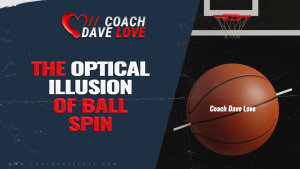The Challenge Point Principle (CPP) serves as a crucial framework for guiding players’ development. It focuses on finding the right level of challenge—neither too easy nor too difficult—so that players stay engaged and improve efficiently. However, coaches must navigate two types of task difficulty: nominal and functional difficulty. This blog explores how these concepts influence practice design, and how coaches can adjust both to keep players in their optimal learning zone
Nominal vs. Functional Task Difficulty
Nominal Task Difficulty refers to the inherent difficulty of a task that applies equally to all athletes. For example, increasing the shot distance from midrange to beyond the three-point line raises nominal difficulty for every player, regardless of their skill level.
Functional Task Difficulty describes how difficult a task feels relative to the specific player. A youth player may find it challenging to get their guide hand off the ball, while an elite shooter finds it easy. Functional difficulty varies by individual based on factors such as experience, physical abilities, and confidence.
Using the Challenge Point Principle to Optimize Development
The Challenge Point Principle emphasizes that players learn best when they are practicing near their optimal challenge level—a zone where success and struggle are balanced. Specifically:
- Too much success (i.e., too easy) leads to boredom and stagnation.
- Too much failure (i.e., too hard) causes frustration and hampers learning.
Coaches can use the CPP to adjust nominal difficulty—through task modifications like adding defenders or increasing movement patterns—to align with the player’s functional difficulty. Research shows that 85% success and 15% struggle represents an ideal balance for motor learning, motivating players while encouraging skill refinement. Global Perf Insights. MDPI
Can Coaches Adjust Functional Task Difficulty?
Functional difficulty is largely inherent to the player, but coaches can indirectly influence it. While nominal difficulty (e.g., shot distance or defensive pressure) is directly controlled by the coach, functional difficulty can shift through strategic practice design. Below are five ways to adjust functional difficulty in practice:
Constraint-Led Practice Design
Adjusting constraints—like adding defenders, limiting dribble moves, or changing the pace—modifies how the player interacts with the task, influencing the perceived difficulty.- Example: If a player struggles with balance during contested shots, a coach can introduce drills that focus on controlled foot placement before adding defenders.
Targeting Weak Areas
Focusing on a player’s weak points, such as removing an involved guide hand, builds specific skills that reduce the functional difficulty of related tasks over time.- Example: A player who struggles with off-the-dribble shooting may start with stationary shots, then progress to movement-based drills.
Using External Cues
External cues (e.g., “aim for the back of the rim”) are shown to reduce cognitive load compared to internal ones (e.g., “keep your elbow in”). This adjustment makes the task clearer, lowering functional difficulty.Incorporating Variability
Research highlights the value of variability in practice. Training under varying conditions prepares players for real-world scenarios, making the task feel less difficult in games.- Example: A shooter may practice from different distances and angles, simulating in-game variability, reducing functional difficulty over time
- Example: A shooter may practice from different distances and angles, simulating in-game variability, reducing functional difficulty over time
Managing Fatigue and Mental Load
Adjusting practice intensity and mental routines helps players build resilience under pressure. Training under fatigue conditions can prepare them for the challenges of late-game situations.- Example: Practicing free throws after intense conditioning helps simulate the mental and physical state players face in games.
Tracking Success Rates to Stay in the Challenge Zone
A useful method for monitoring functional and nominal difficulty is tracking players’ success rates:
- If success is too high (e.g., 80%+), the task is too easy. Increase nominal difficulty by adding movement, defenders, or game-like conditions.
- If success is too low (e.g., 20%), the task is too difficult. Reduce nominal difficulty by simplifying the task or adjusting constraints.
In practice, game-like success rates should align with performance expectations. For instance, if a player is expected to shoot 40% from the three-point line, drills should be designed to ensure they achieve a similar rate in practice. This keeps the challenge realistic and aligned with game conditions.
Conclusion: Balancing Nominal and Functional Difficulty for Optimal Learning
While nominal difficulty is more directly controlled, functional difficulty can be influenced through creative practice design. By managing both types of difficulty, coaches can ensure that players remain in their optimal learning zone. The key is to:
- Define the habit to be built and establish clear success criteria.
- Adjust nominal difficulty based on the player’s performance.
- Influence functional difficulty through constraints, targeted feedback, and variability.
This nuanced approach ensures that players are neither overwhelmed nor bored, helping them improve steadily and translate their practice performance into game success.
This approach is supported by the Challenge Point Principle and motor learning research, which emphasize that optimal challenge promotes the best learning outcomes. By using these principles, coaches can fine-tune practice design and foster meaningful skill development.



